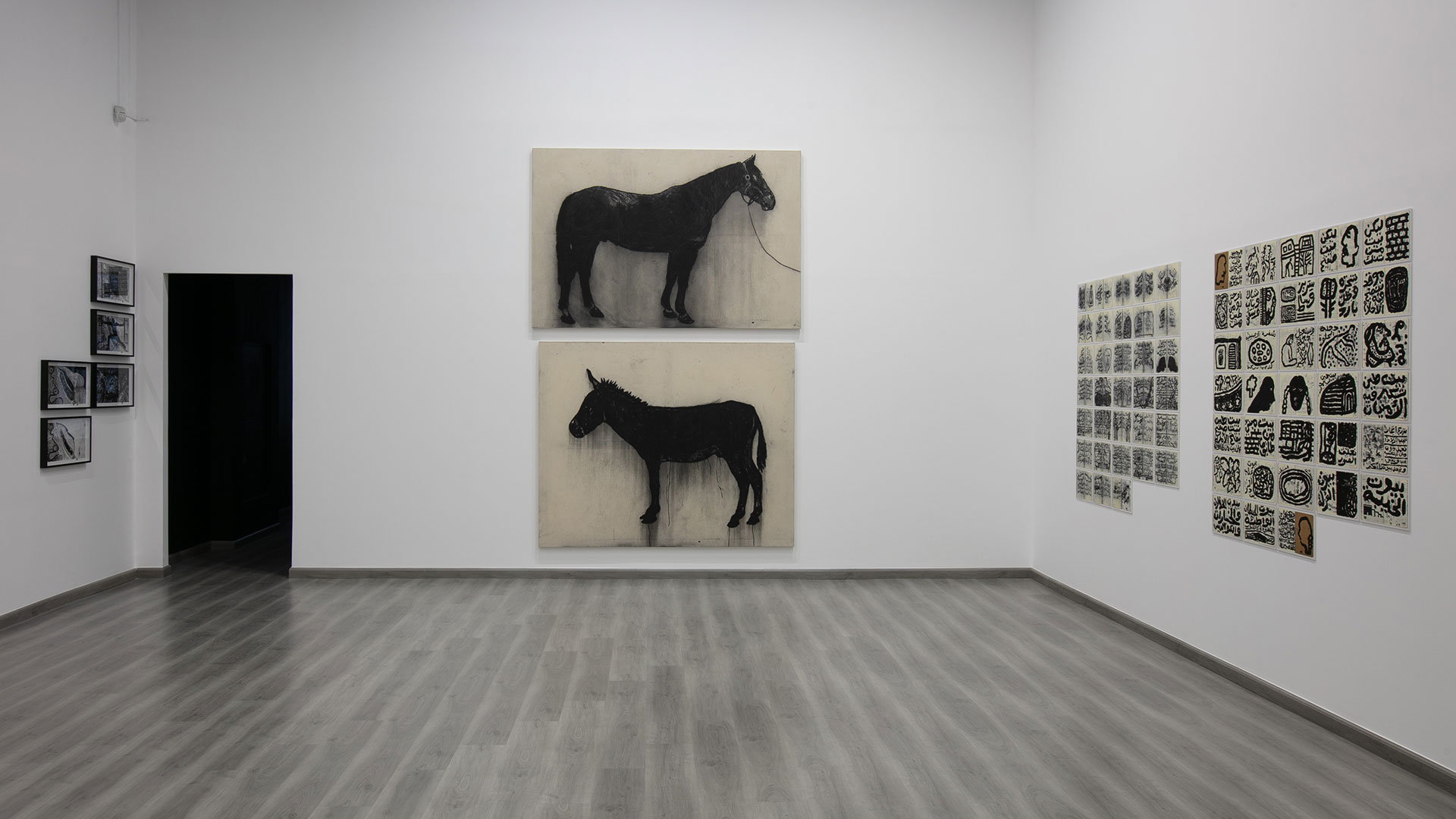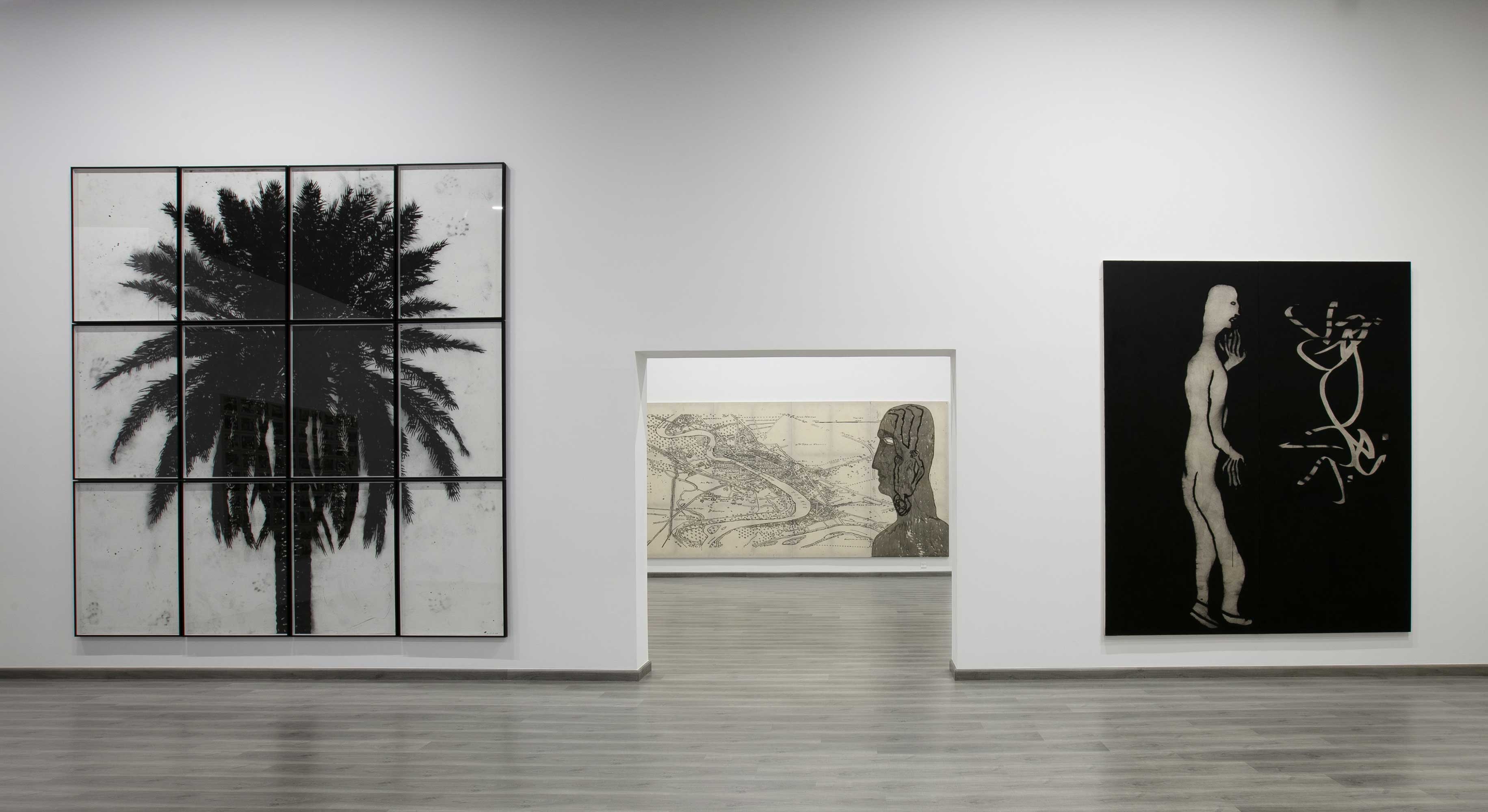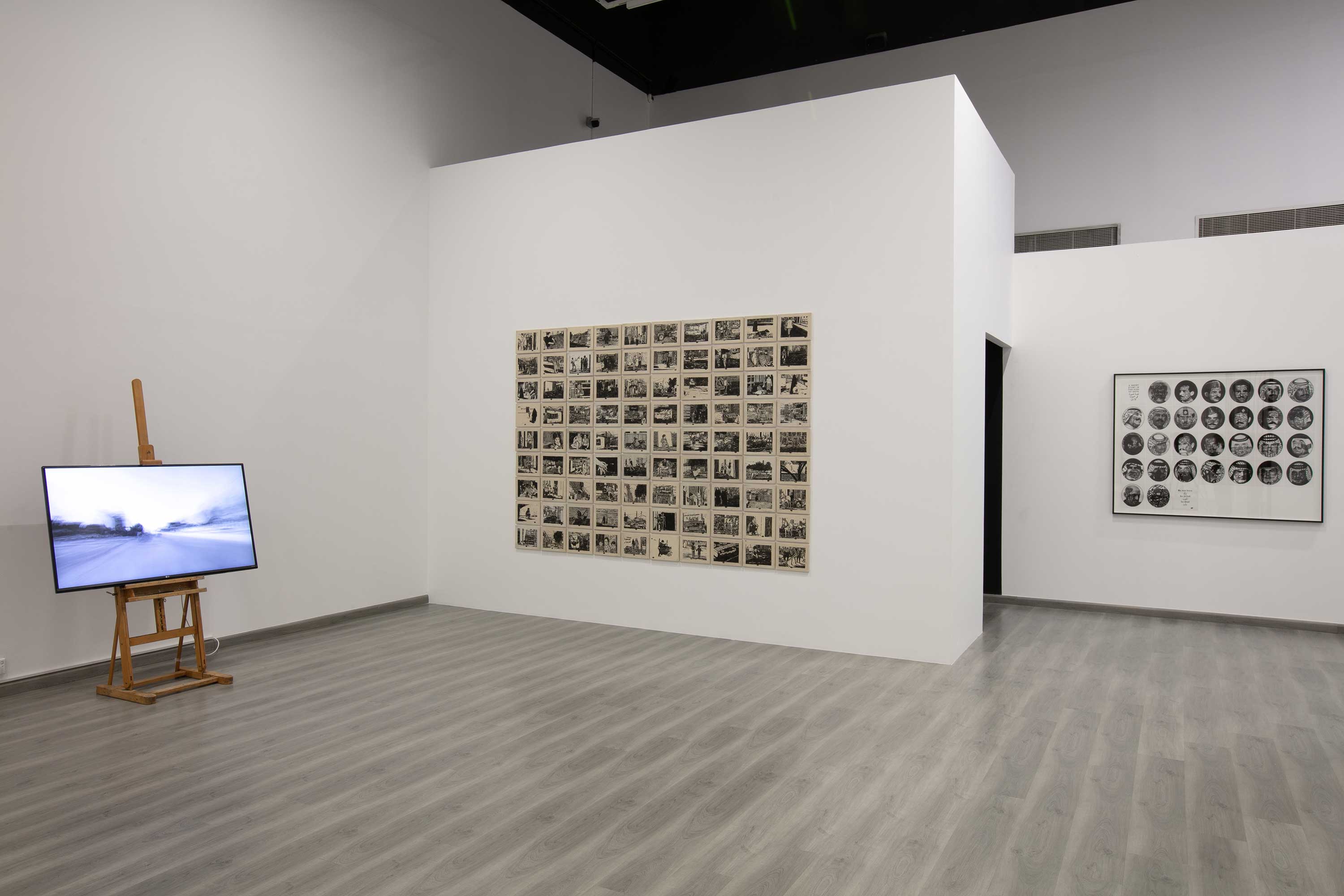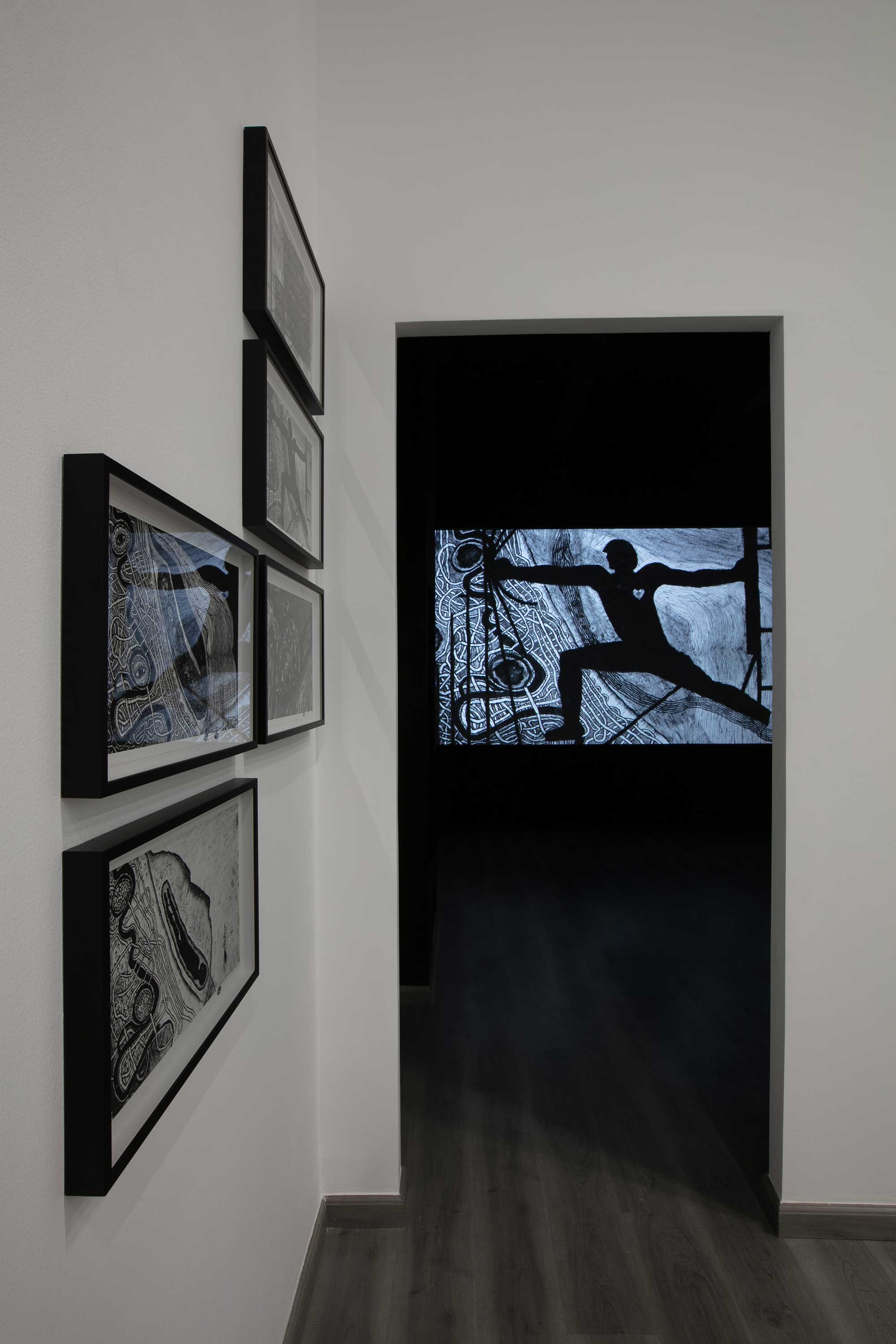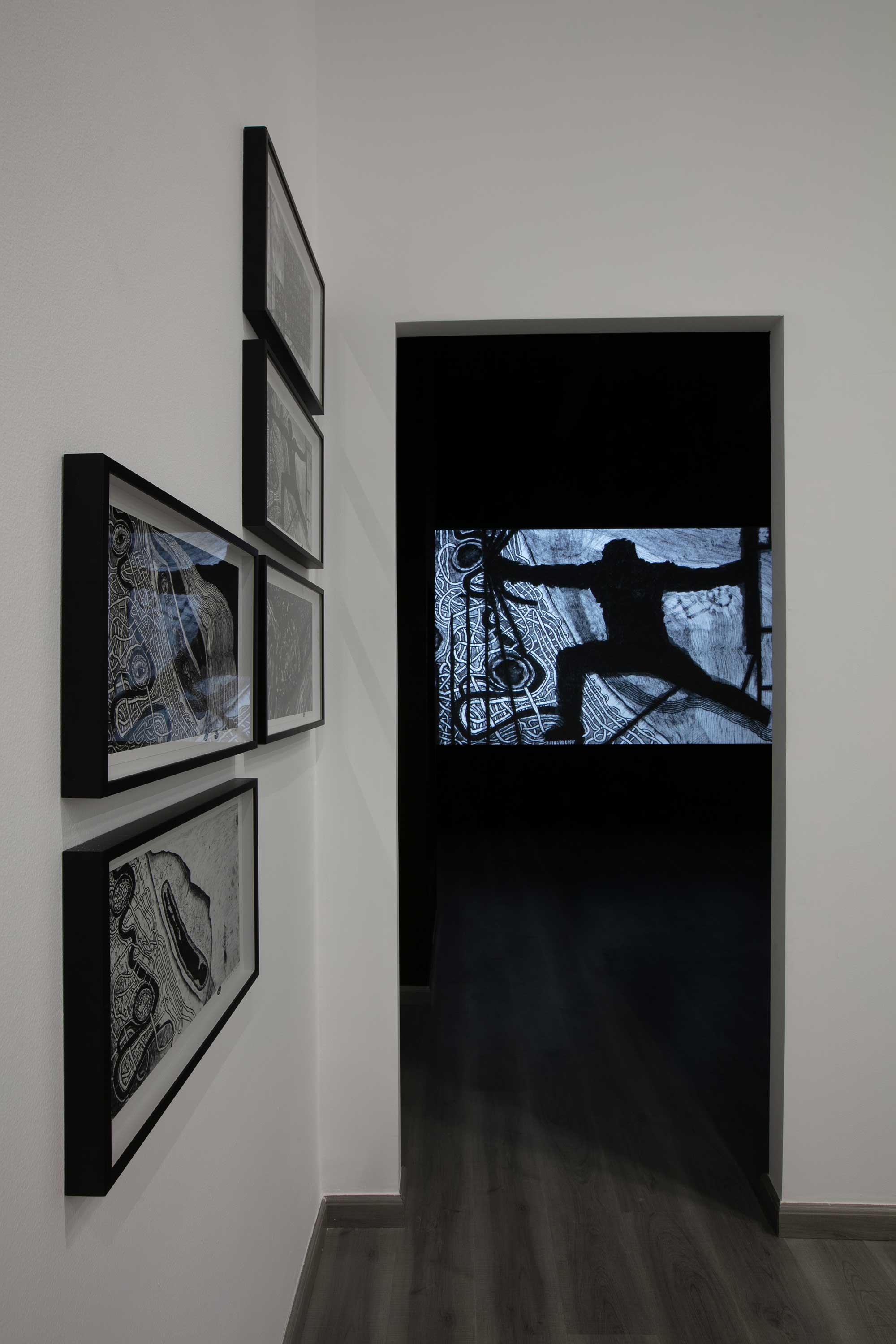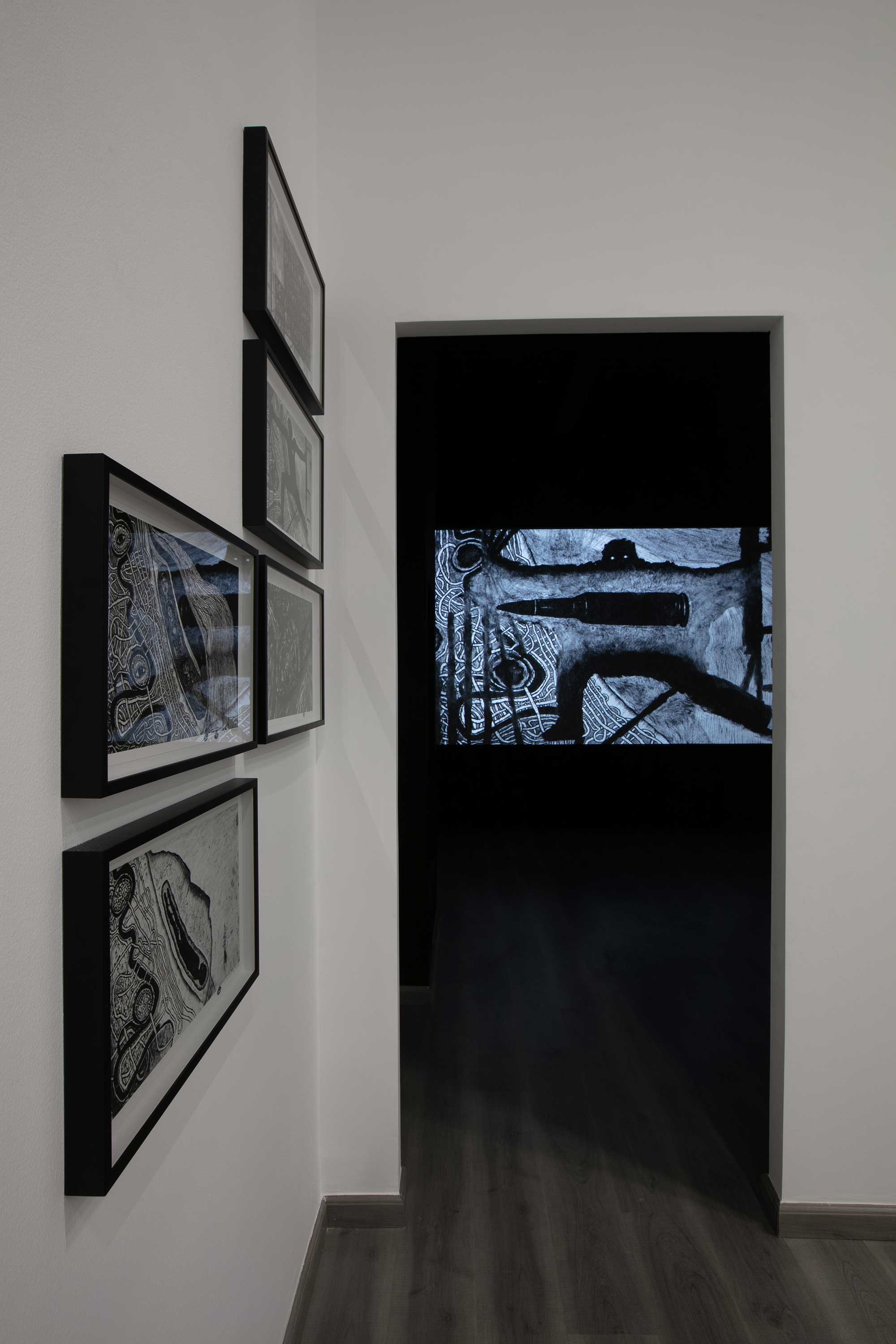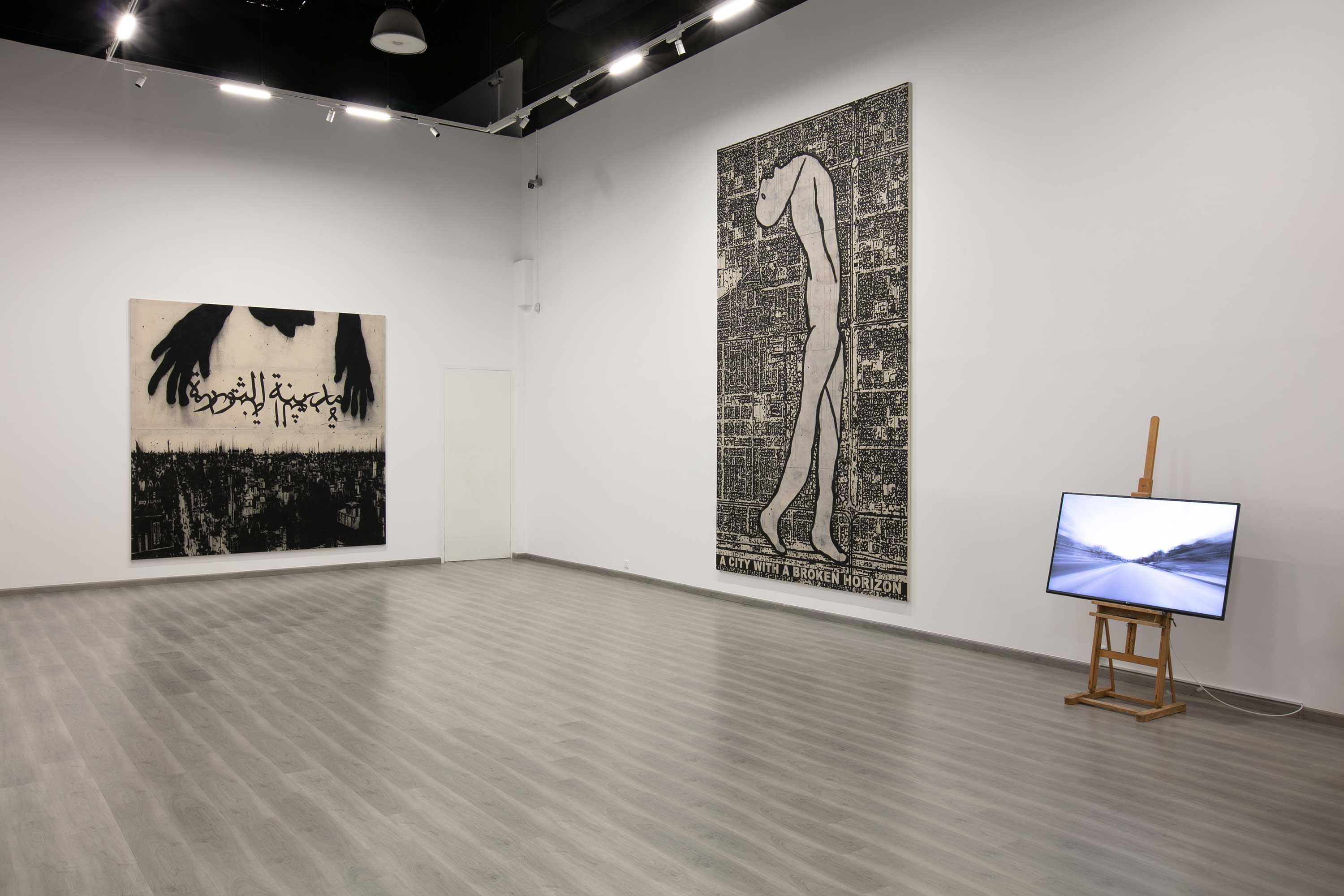Ayyam Gallery is pleased to present Those Houses Behind the Army Canal, a solo exhibition featuring Sadik Kwaish Alfraji’s recent body of work. This series is the second chapter of Alfraji’s project Books of Passage, charting three generations of migration in his family. The first chapter, entitled The River That Was in the South (2019) was shown at the Stedelijk Museum in Amsterdam, the Ayyam Gallery in Dubai and the Cairo Biennale.
Books of Passage consists of three chapters in which the artist explores how identity was formed in his grandfather’s, father’s and his own generation. As he explores existential questions about the world around him, Alfraji collects and arranges personal and collective memories, in an attempt to understand and dissect them using the tools he works with as an artist.
Alfraji believes that memory consists of several layers which may conflict with each other, or exist as fragments, or be interwoven with each other, and are generally also incomplete due to the emptiness that war, migration, and loss leave behind. A new layer of memory is created, for example, when someone builds a new life in a different place, but it can also be passed on through the language and culture of previous generations. In the three chapters of this project, Alfraji explores the intercultural influences, cultural identity and layered memory of his own family history and also, more generally, of people who have had to flee their country.
The second chapter, Those Houses Behind the Army Canal (2021), which was shown for the first time at Kunsthal KAdE, and now shown at the gallery, is about Alfraji’s father’s generation, who left the south for Baghdad. Once there, they were forced to live in the slums. When the coup took place in 1958, and the Republic of Iraq was declared, the new leader Abd al-Karim Qasim announced a plan to rehouse the inhabitants of the slums. He had The Army Canal dug, beyond which the new neighbourhood Madinat al- Thawra (Revolution City, now known as Sadr City) was built, where every family was given a plot of land. The bright promise of the new neighbourhood soon faded, however.
The new residents had to build their own homes using the cheap materials available to them, the streets were narrow and initially there were no drains, so the entire district flooded with water when it rained. His father’s generation who had left the south were stranded in a dysfunctional neighbourhood, a canal separating them off from the rest of the city, which did not fully accept them. Al-Thawra has more than a million residents these days, yet still has no prospects of a better future. The people who live there hope for a better life, and so their children’s generation also take the path of migration.
In Those Houses Behind the Army Canal the artist tries to capture the history of his father’s generation in sketch books, animations, archive material, video footage, drawings and etchings. In order to make this work and better understand this history, he tried to imagine himself in the people’s shoes, and in the city, the streets, the trees and the houses. In a series of journals he created a dialogue between his father and himself, imagining himself as his father, deciding to go to Baghdad and build a house there for his family, and how it must have been to arrive there.
Alfraji visualizes the concerns and faces of this generation in screenprints of old portraits he found on the internet and elsewhere, the iconic images and logos there, and videos and drawings of what it looked like at the time, and how it looks today. He does not tell a linear story, instead presenting an accumulation of memories, imaginings and ideas. In one painting a timeless figure looks out over Baghdad, observing the city, unsure of what the future will bring. Perhaps he sees a history that has already been lived yet still persists as an undying fact of life for countless others in the same situation.
Read more +
Read less -







 Sign in with email
Sign in with email


